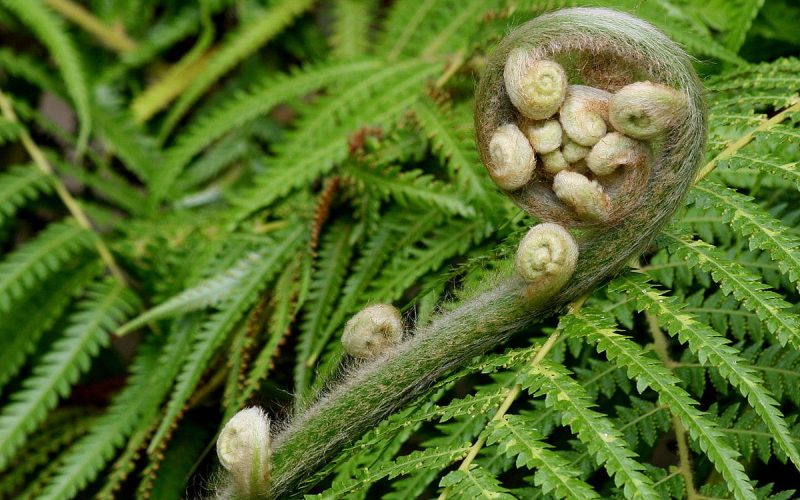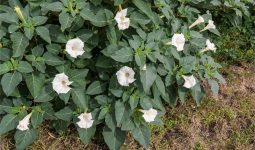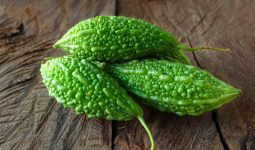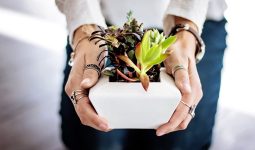Ferns are one of the most commonly spotted ancient group of plants. From available fossil record, scientists are of the opinion that land plants were washed from the water about 475 million years ago.
By no longer than 400 million years ago, there was a separation between vascular plants had separated from non-vascular plants, and soon after that happened, the ferns also separated off.
By around 350 million years ago, many of the significant fern families are seen in the fossil record. This finding makes ferns much older than most existing land animals.
At the time of the existence of ferns, some invertebrate animals had already started roaming on land – and much older than the dinosaurs!
Ferns are unique as individuals as they come in a wide variety of sizes and shapes, from the very small ones, like the kidney fern, to those that grow 20 meters tall (the tree fern). However, most ferns have the same basic structure.
The structure of a fern
All ferns have three main parts – the fronds, the rhizome, and the reproductive structures known as the sporangia. The characteristics of each of the fern’s three parts are used for identification and classification.
The rhizome of the fern is the stem of the plant. It can come in any of the 3 basic forms:
- An erect rhizome: This is a solid mass part that gives rise to a tuft of fern fronds. You can spot this type of rhizome on a crown fern or king fern.
- A laterally growing rhizome: This is the type that creeps under or along the ground. This kind of fern may even climb up a close-by tree. Thread ferns and hound’s tongue are two examples of fern that have a creeping rhizome.
- A vertical rhizome: This may grow into a tall or short trunk. The trunk of the silver fern (ponga) is an upright rhizome.
The fronds of a fern are the leaves. There is usually a stalk (known as the stipe), then a flat blade (known as the lamina), usually divided into segments.
The frond of the fern may be straightforward and undivided, or it may be shared into a number of divisions (known as pinnae). New fronds are made from the rhizome.
These new fronds are tightly coiled into a spiral (known as a Koru or fiddlehead), and as they mature, they slowly uncoil. Fronds perform a dual function. They are there to carry out photosynthesis, and they are also there for the sake of reproduction.
The spores are the third part. They grow inside casings known as sporangia. These casings are found on the back part of fronds.
However, not every frond has these sporangia underneath. Fronds with sporangia are known as fertile fronds. In the vast majority of ferns, you can find the sporangia in clusters (called sori).
These clusters are the black, brown, or orange patches that you spot on the underside of fern fronds. When Fern’s sporangia break open, they will release the spores.
All ferns are unique
Ferns are one of the most unique amongst land plants because they have two unique living structures in their reproductive cycle – the gametophyte and the sporophyte.
For easy identification, the fern plants that we randomly see in the bush that produce spores are known as sporophytes. When the ferns release spores by the sporangia, if the spores land in a hospitable area, they can quickly grow into a tiny plant – called the gametophyte.
The gametophyte is an inconspicuous, short-lived plant that has two separate sets of reproductive organs – the archegonia (female) and the antheridia (male).
In conditions that are suitably moist, fertilization can either take place on the same gametophyte or an adjacent one. When fertilization takes place, it gives rise to a brand new sporophyte.
Asides the fern, there is no other land plant that has these two independent living stages.
We hope you loved this read. Kindly leave a comment below.








